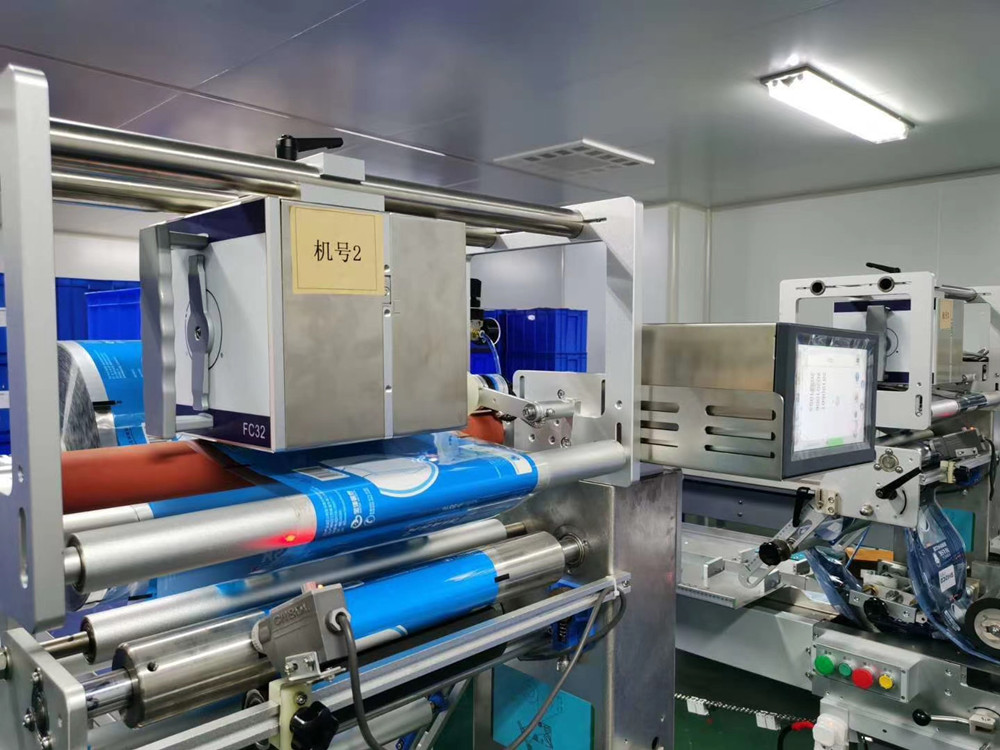Introduction to Contact Type Date Coding Machines
The contact type date coding machine directly contacts with the product or packaging surface being coded. In addition to printing the production date and expiry date, it can also print batch number, lot number, logo, text, one-dimensional codes, two-dimensional codes, etc. Ink roll date coding machine, Hot stamp date coding machine, and heat sealing machine with date stamp are traditional contact type date coding machines. The smart thermal transfer overprinting machine (TTO) is a new type of contact coding machine.

Smart thermal transfer overprinting machine (TTO)
The smart thermal transfer overprinting date coding printer (TTO) requires a thermal transfer print head and a thermal transfer ribbon in contact with the packaging material. Through instant heating, the ink on the ribbon is melted and then transferred to the packaging material. The intelligent control makes the heating tape point on the packaging material and prints the date and various contents. TTO date coding machine is ideal for a variety of flat flexible packaging films, labels, and smooth sheets. Usually, this type of date printer is integrated with the packaging machine to print numbers, letters, text, logo graphics, barcodes, etc. on the production line. The typical printing contents include expiry date, best before date, and production batch number.
Pros
1. Printing speed up to 600mm/s or more
2. High resolution print quality
3. Intelligent control to avoid human errors, misprints, missed prints and other errors
4. Support printing variable real-time time information
5. Low operating costs
6. No need to preheat
Cons
1. Higher upfront investment costs
2. Suitable for large-scale production lines, not suitable for small-scale production
HPRT is a professional thermal transfer overprinter factory. HPRT automatic coding machines have been integrated into many packaging lines, such as food, medical, daily chemical, and others. If you are a packaging equipment provider or looking for a smart thermal transfer overprinter for date printing, batch coding, ink coding, or others, we can provide you with free sample printing and consulting services. Welcome to leave a message on our website.
Ink roll date coding machine
The ink roll date coding machine relies on copper or lead characters to contact the heated ink wheel before contacting the packaging material, transfer the melted ink to the characters, and then contact the packaging material to form the printed content by mechanical pressure.
Pros
1. Lower cost of machine and ink roller
2. Fast printing speed
3. Easy to operate
Cons
1. Poor print quality
2. Cannot print real-time variables, graphics and barcodes
3. It needs to be warmed up for about 20 minutes each time it is turned on
4. The replacement of characters is prone to errors and waste
5. The replacement of characters is prone to errors and waste
Hot stamp date coding machine
The hot stamping date coding machine is a coding method that transfers the ink on the carbon ribbon to the packaging material through mechanical pressure at a high temperature.
Pros
1. Machines and ribbons are cheap
2. Several machines linked printing
Cons
1. Short ribbon length, usually between 100~150 meters.
2. Higher ribbon consumption than ink roll coder, without ribbon saving function.
3. Currently generally intermittent coding machine, slow speed
4. Low print quality, unable to print real-time variables, graphics, and barcodes
5. It needs to be warmed up for about 20 minutes each time it is turned on.
6. The replacement of word grains is prone to errors and omissions
7. Easy to pierce the packaging film
Heat Sealing Machine with Date Stamp
Date printing with a heat sealing machine completely relies on mechanical pressure to emboss the formed metal characters on the product packaging.
Pros
1. No consumables
2. Easy to install
Cons
1. It is difficult to see the printed date because the printed characters are displayed by concave and convex imprinting
2. The printing grade is not high
3. The printing position is limited by the sealing position








